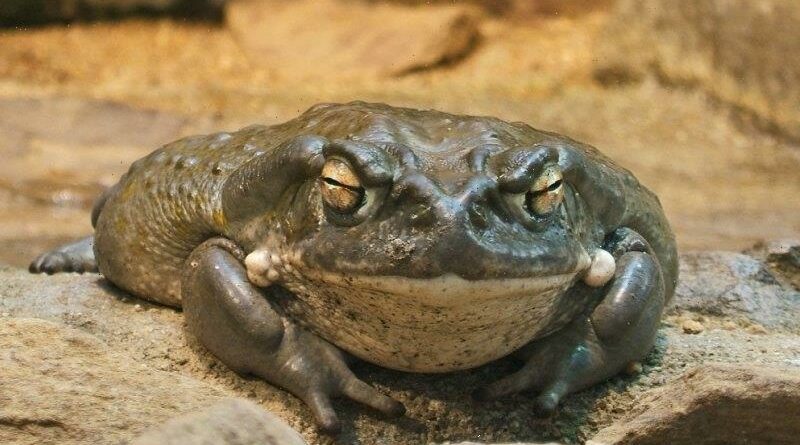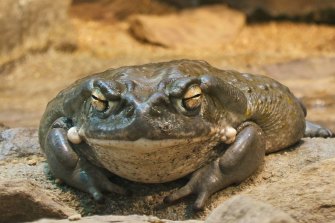Psychedelic toad’s sought-after venom puts rare reptile at risk
Washington: The Sonoran Desert toad, once common in the US south-west and northern Mexico, is in danger because of demand for its hallucinogenic venom.
Renewed interest in psychedelics has made the toad sought after, to the alarm of environmentalists. Such drugs are seen as a treatment for mental disorders.
The Sonoran Desert toad.Credit:Internet
The toad is believed to be the only amphibian that produces the 5-MeO-DMT, which is stored in glands behind each eye, explained Robert Villa, president of the Tucson Herpetological Society.
“There’s a psychedelic renaissance and there’s a whole sect of this community devoted to the Sonoran Desert toad,” Villa added.
The venom is said to have remarkable qualities. Some claim that it has ended their dependence on methamphetamines or opioids. Dried into crystals and smoked, the venom provides a half-hour “hit” without the downside of hours of hallucinating and vomiting.
Known as “Five” or “Bufo” – from the toad’s scientific name – the venom has celebrity users. Hunter Biden, son of the US President, credited the venom with helping cure his addiction to crack cocaine. “The experience unlocked feelings and hurts I’d buried deep for too long,” he wrote.
Devotees flock to specialist retreats to take the substance, with such a ceremony in East Texas costing $250 ($336), according to The New York Times. Wealthier devotees at a beachfront in Tulum, Mexico, where the drug is legal, can pay as much as $US8500. Some retreats have paramedics to deal with any negative reactions.
Although the drug is illegal in the US, authorities turn a blind eye to ceremonies. While some entrepreneurs have started breeding farms, others hunt the toads in the wild.
Numbers are dwindling because of rustling, with the olive-green creatures, slightly smaller than an American football, hunted in the desert. Rustlers were filmed at Spur Cross Ranch Conservation Area, a park north of Phoenix, Arizona, making off with an estimated 24 toads.
Thomas Jones, amphibians and reptiles programme manager with the Arizona Game and Fish Department, said: “Poaching takes place. There have been anecdotal reports of it. But even our law enforcement guys don’t have a good feel for toad poaching.”
Inevitably, this is having an impact on the population which once flourished in the Sonoran Desert, which extends from California to Arizona, New Mexico and across the border into Mexico itself.
Rustling is the last thing the toad needs, with the amphibians vulnerable to predators such as gila monsters and raccoons, or even to being squashed by motorists. It is feared that the toad has disappeared completely from California and authorities in New Mexico have listed the species as endangered.
Campaigners are pushing for the toads to be protected.
Telegraph, London
Get a note directly from our foreign correspondents on what’s making headlines around the world. Sign up for the weekly What in the World newsletter here.
Most Viewed in World
From our partners
Source: Read Full Article




